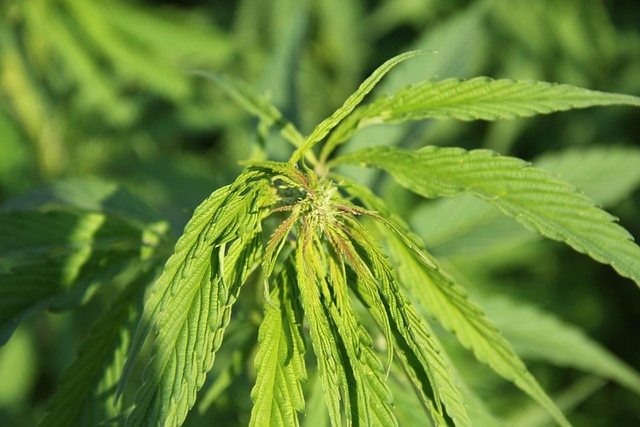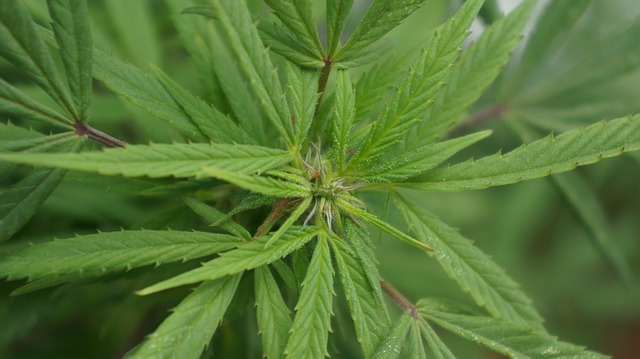
In the realm of neurology, the management of Parkinson’s disease remains a complex challenge. Recent advances, however, have shed light on the potential therapeutic role of cannabinoids. Medical cannabis, particularly CBD (cannabidiol) and THC, has emerged as a subject of interest in this domain. A systematic review and meta-analysis have pooled evidence regarding the effects of cannabis use for Parkinson’s, spanning both motor and non-motor symptoms.
Exploring Cannabinoid Therapies for Parkinson’s Disease Management
This therapeutic avenue has garnered attention due to its potential to alleviate symptoms like tremors and address non-motor complications.
The survey on cannabis use among Parkinson’s patients reveals a growing trend of using cannabis for symptom relief. Many cannabis users report improvements in both motor and non-motor aspects, indicating a broad spectrum of benefits. Medicinal cannabis has shown promise in mitigating non-motor symptoms like sleep disturbances and mood fluctuations. As the effects of cannabis on Parkinson’s are being better understood, the medical community is increasingly considering its integration into comprehensive therapeutic approaches.

However, caution remains crucial. While the potential benefits of cannabinoids are intriguing, more rigorous research is essential. Rigorous systematic reviews are indispensable to identify consistent trends and establish the efficacy and safety of cannabinoid therapies. The variations in formulations, dosages, and methods of using cannabis emphasize the need for well-designed trials. In the pursuit of enhancing the quality of life for those with Parkinson’s, a nuanced understanding of the balance between medical cannabis benefits and potential risks is imperative.
In summary, the exploration of cannabinoid therapies for Parkinson’s disease management offers current insights into potential breakthroughs. While medical cannabis, CBD, and other cannabinoids show promise in addressing both motor and non-motor symptoms, careful consideration is necessary. A holistic approach, combining conventional therapies with emerging cannabinoid interventions, could pave the way for more effective strategies in Parkinson’s disease management.
Cannabinoid Interventions in Parkinson’s Disease. Progress and Prospects
The exploration of cannabinoids as a potential treatment for motor and non-motor symptoms of Parkinson’s disease (PD) has gained traction in recent years. Clinical trials assessing the efficacy and safety of cannabinoid-based interventions are shedding light on their effects on movement disorders, hallucinations, and other symptoms associated with PD. The use of medical cannabis, specifically THC and CBD, has shown promise in alleviating symptoms, making it a topic of interest for people living with PD, clinicians, and researchers alike.
One of the challenges in evaluating the medical use of cannabis is the variability in its formulations and the lack of standardized dosages. Clinical trials are essential to determine the optimal ratio of THC and CBD for maximum therapeutic benefit while minimizing potential adverse effects. De Faria’s research on cannabis products and their effects on PD patients has contributed to the growing body of knowledge.
Comparing PD patients who use medical cannabis with non-users reveals interesting insights. Some PD patients report improvements in their symptoms, suggesting that cannabinoid interventions might offer a novel avenue for symptom management. However, a comprehensive understanding of the potential risks, including hallucinations and other adverse effects associated with cannabis use, is crucial.
As the field evolves, the medical community is striving to bridge the gap between anecdotal evidence and scientific rigor. The progress in cannabinoid research for PD holds prospects for refining treatment approaches. Collaborative efforts between clinicians, researchers, and patients will continue to shape the landscape of PD management, potentially opening new avenues to enhance the quality of life for those affected by this challenging disease.
Unraveling the potential of cannabinoids in parkinson’s disease treatment
The therapeutic landscape for Parkinson’s disease (PD) is expanding, and the potential of cannabinoids is emerging as a compelling area of exploration. With varying routes of administration, the use of medical marijuana is being investigated for its impact on motor symptoms and levodopa-induced dyskinesia. The efficacy and safety of cannabis, particularly Cannabis sativa, in PD treatment have captured the attention of both clinicians and patients.
Numerous studies have reported cannabis use among individuals with PD, revealing anecdotal accounts of symptom alleviation. The effect of medical cannabis on dopaminergic pathways, pivotal in PD pathogenesis, is of particular interest. Despite clinical interest, a comprehensive understanding of the therapeutic effects of cannabis remains in the nascent stage, and randomized controlled trials are necessary to ascertain its true potential.
Exploring cannabis and cannabinoids in the context of PD also unveils connections to other neurologic disorders. Multiple sclerosis, another neurodegenerative condition, has witnessed cannabinoid-based interventions with varying success. As the American Academy of Neurology recognizes the need for rigorous investigations, the path towards understanding the role of cannabis in PD treatment becomes clearer.
However, the journey is accompanied by challenges. Adverse effects, variations in strains, and route of administration underscore the complexity of integrating cannabis into mainstream PD therapy. Clinically meaningful outcomes, validated through scientifically robust methods, are essential to establish cannabis as a potential treatment of PD.
In conclusion, the potential therapeutic effects of cannabis on PD are both intriguing and promising. While reported cannabis use among PD patients sparks curiosity, rigorous randomized controlled trials will be pivotal in determining its clinical significance. As research progresses, unraveling the potential of cannabinoids in PD treatment holds the promise of enriching the therapeutic armamentarium for individuals grappling with this complex neurodegenerative disorder.
Navigating parkinson’s disease with cannabinoid-based approaches
Recent developments in Parkinson’s disease management have turned the spotlight on cannabinoid-based approaches. Patients using cannabis, often in the form of CBD and THC, have reported varied outcomes. While THC’s psychoactive nature raises concerns, CBD’s potential therapeutic benefits are gaining recognition. As the second most common neurodegenerative disorder, Parkinson’s disease presents a complex landscape.

An open-label observational study explored the effects of cannabis use among patients with varying disease durations. Comparisons between users and non-users yielded insights into potential benefits. However, the influence of recreational cannabis cannot be overlooked, warranting rigorous investigations. Placebo-controlled trials are pivotal in differentiating true therapeutic effects from placebo responses.
Though positive anecdotal accounts abound, negative side effects remain a consideration. The mean PD duration adds another layer of complexity, demanding tailored approaches. The research is needed to unravel the intricacies of cannabinoid-Parkinson’s interactions. De Morais Fabrício’s work highlights the importance of advancing scientific understanding in this realm.
In conclusion, navigating Parkinson’s disease with cannabinoid-based approaches is a journey marked by recent developments. The contrasting effects of CBD and THC, the need for robust research, and the challenge of distinguishing true benefits from placebo effects underscore the complexity. As the scientific community delves deeper, elucidating the role of cannabinoids in PD management holds the potential to shape future therapeutic strategies.
From Bench to Bedside. Cannabinoid applications in parkinson disease care
The therapeutic potential of cannabinoids in treating Parkinson’s disease (PD) has journeyed from bench to bedside, captivating both researchers and patients alike. The cardinal motor symptoms that burden people with PD have prompted studies examining motor-focused interventions. The second most common neurodegenerative disorder, PD’s impact on patients’ lives has fueled interest in complementary approaches.
Read post about Cannabis in Thailand
Exploring the use of cannabinoids for PD would entail deciphering the optimal ratio of CBD and THC. The ratio’s influence on symptoms of PD, ranging from tremors to mobility challenges, may, in part, shape its therapeutic efficacy. Research into cannabinoid applications, while promising, must be guided by robust science and clinical insights.
The real-life patients’ experience forms a critical bridge between research and practical care. People with PD are increasingly interested in exploring avenues beyond conventional treatments. As the Guideline Development Subcommittee delves into shaping recommendations, insights from both studies and real-life patients’ experiences are invaluable.
However, the journey isn’t without its complexities. Balancing the potential benefits of cannabinoids with their interactions and potential side effects demands careful consideration. As the burden of Parkinson’s disease remains substantial, approaches like cannabinoid therapies offer a glimmer of hope. While much progress has been made, the true impact of cannabinoid applications in PD care is still unfolding.
In conclusion, the transition from bench to bedside for cannabinoid applications in Parkinson’s disease care reflects the promising trajectory of research and patient-centric approaches. The synergy between scientific exploration and real-life patients’ experiences holds the key to unlocking the full potential of cannabinoids in alleviating the symptoms of Parkinson’s disease, ultimately contributing to improved quality of life for those affected by this challenging condition.
Can cannabis help people with Parkinson’s disease?
People with Parkinson’s disease often grapple with a range of symptoms, from tremors to mobility challenges. For these disease patients, the quest for effective therapies is ongoing. One compound of interest is tetrahydrocannabinol (THC), a form of cannabis. Although cannabis has two main components, THC and CBD, studies examining motor-related issues in disease patients have been particularly intriguing.
Could cannabis use hold promise for PD? This question has prompted studies exploring its potential benefits. Some patients with Parkinson’s disease have reported using cannabis, hoping for relief from their symptoms. The use of cannabis for PD would involve deciphering the optimal balance of its components.
However, the question isn’t without complexities. While some are hopeful about cannabis as a potential treatment, there are concerns to address. The form of cannabis and the proper dosage are crucial factors. Delving into the therapeutic potential of cannabis for PD would involve rigorous research and a comprehensive understanding of its effects on the disease.
In conclusion, the potential of cannabis in alleviating symptoms of Parkinson’s disease sparks curiosity. While some patients have reported using cannabis and studies are examining its effects on motor symptoms, cautious exploration is essential. The journey of understanding the use of cannabis for PD is multifaceted, requiring robust scientific exploration and a clear understanding of its impact on patients’ well-being.
Discover a world of quality and variety at WeedShop.one! Explore premium cannabis products that elevate your experience. Your journey to bliss starts here.